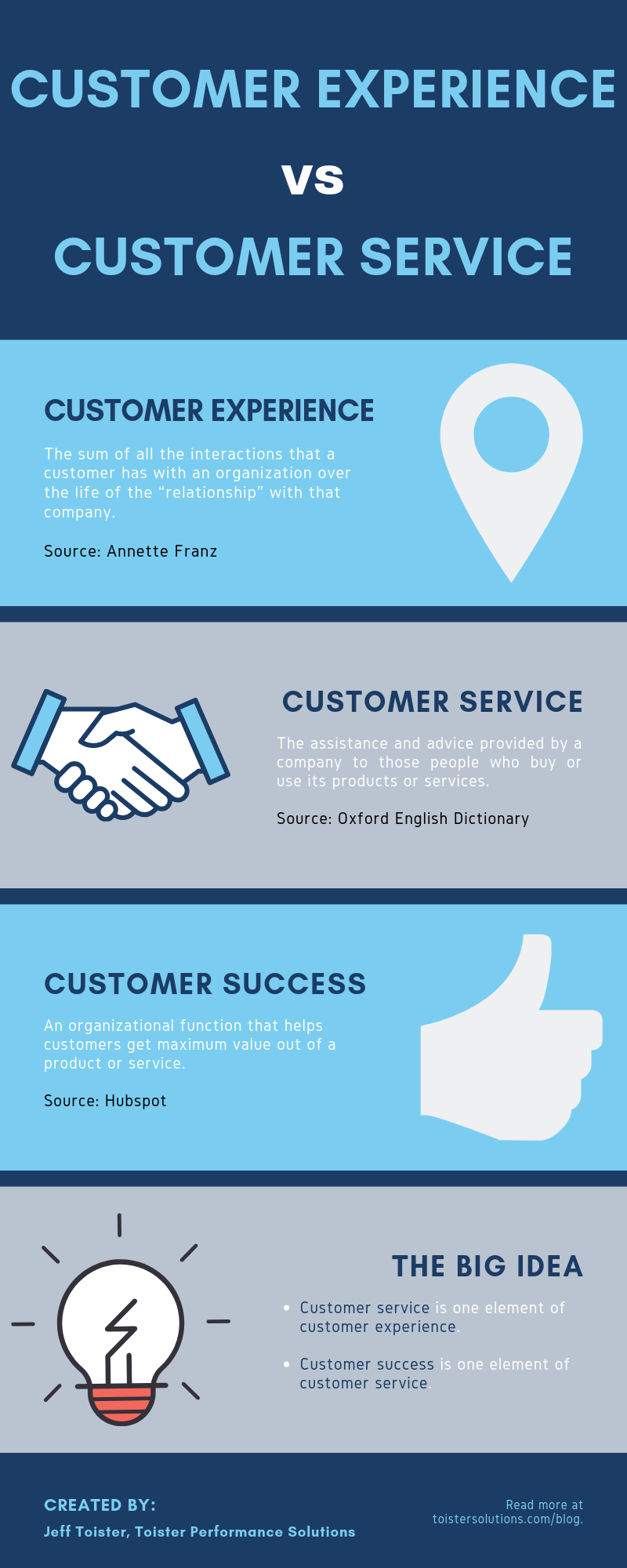My beloved iPad is dying a slow death.
It's several years old and I use it daily. The memory is nearly full. I've dropped it a few times. The lightening connector is getting finicky.
So I'll soon be making a trip to the Apple Store to buy a new one. This process provides a nice overview of the differences between customer experience, customer service, and even customer success.
What is Customer Experience?
Here's a definition from customer experience expert, Annette Franz:
The sum of all the interactions that a customer has with an organization over the life of the “relationship” with that company… and, especially, the feelings, emotions, and perceptions the customer has about those interactions.
The elements of customer experience go well beyond just customer service. To illustrate this, I've listed some of the steps in my customer journey with the customer service elements in bold.
My experience with my current iPad (I love it, so I want another)
Visiting the Apple website to research new options
Driving to the Apple Store and parking (gotta avoid the crowds!)
A person greets me as I walk in the door and offers assistance
The Apple Store layout
I'm introduced to another employee who assists me with my selection
The employee shows me some of the new iPad's features
The look, feel, and function of the new iPads
The employee rings up my purchase on a mobile device
Another employee retrieves my new iPad from the stockroom
Unboxing my new iPad at home after I buy it
I follow guided instructions to configure my new iPad
A support article helps me transfer my content from the old iPad
Using the new iPad every day
What is Customer Service?
This is a helpful definition from the Oxford English Dictionary:
The assistance and advice provided by a company to those people who buy or use its products or services.
Customer service also includes something called customer success, which I'll define in just a moment. Here is a summary of the customer service I can expect to receive from Apple, with the customer success elements in italics.
A person greets me as I walk in the door and offers assistance
I'm introduced to another employee who assists me with my selection
The employee shows me some of the new iPad's features
The employee rings up my purchase on a mobile device
Another employee retrieves my new iPad from the stockroom
I follow guided instructions to configure my new iPad
A support article helps me transfer my content from the old iPad
This short video provides more detail.
What is Customer Success?
Here's a straightforward definition from Hubspot:
An organizational function that helps customers get maximum value out of a product or service.
Buying a new iPad would be a frustrating experience if I couldn't figure out how to use it. There are a few particular functions, such as configuring the new device or transferring content from my old device that can either create a moment of delight or a moment of misery.
Here are some examples of how Apple focuses on customer success:
The Apple Store employee shows me some of the new iPad's features
I follow guided instructions to configure my new iPad
A support article helps me transfer my content from the old iPad
The Total Customer Experience
One of Apple's secrets is the organization's understanding of all three elements and how they work together.
The overall experience is customer-focused. Apple's products work seamlessly together, which is why I own a MacBook, an iPad, and an iPhone.
The customer service function is designed to quickly get me the help I need. When there's a human involved, I've consistently been served by someone who was friendly, helpful, and knowledgeable.
The customer success function is dialed in to make using Apple products easy and intuitive. There are gentle nudges, such as on-screen prompts, in just the right places along with deeper assistance and even in-store classes if I need them.
So yes, I'm a huge fan.












